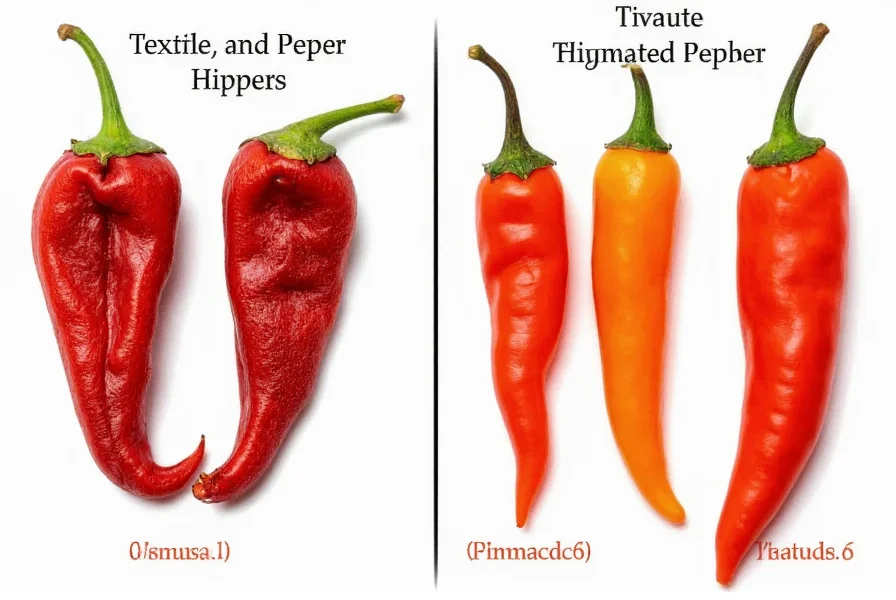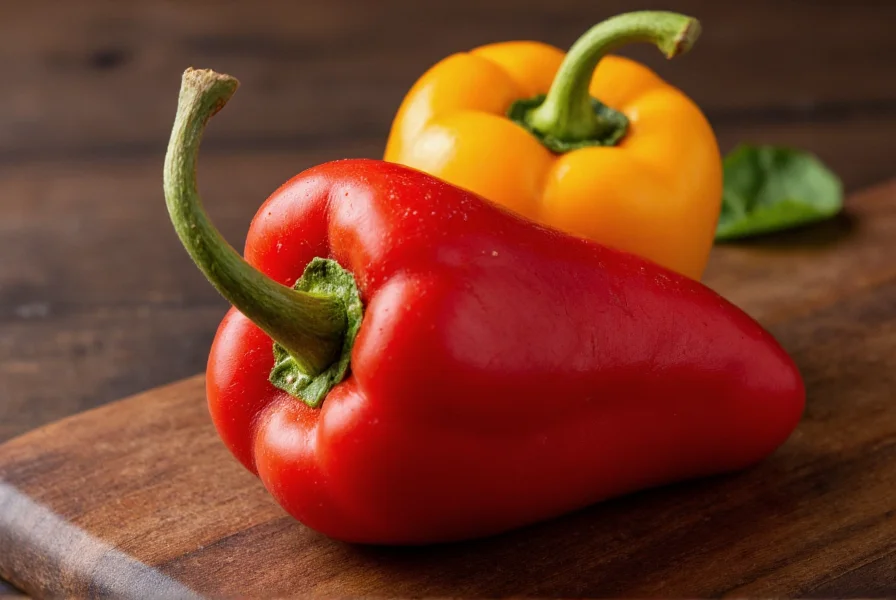Understanding the roasted pepper begins with recognizing how heat fundamentally alters pepper chemistry. When exposed to 400-450°F (200-230°C) temperatures, the Maillard reaction and caramelization processes create over 50 new flavor compounds not present in raw peppers. This transformation explains why roasted red pepper spread, charred poblano salsa, and smoked pepper sauces possess distinctive depth compared to their fresh counterparts.
Pepper Varieties Best Suited for Roasting
Not all peppers respond equally to roasting. Thick-walled varieties maintain integrity while developing optimal flavor:
| Pepper Type | Roasting Time | Flavor Profile | Best Culinary Uses |
|---|---|---|---|
| Bell Peppers (Red/Yellow) | 20-25 minutes | Sweet, caramelized | Antipasti, romesco sauce, stuffed peppers |
| Poblano | 15-20 minutes | Earthy, mild heat | Chiles rellenos, rajas con crema |
| Jalapeño | 10-15 minutes | Smoky, medium heat | Salsas, infused oils, pepper jelly |
| Cubanelle | 18-22 minutes | Mild, fruity | Italian peppers, sandwiches, salads |
Science Behind Flavor Transformation
The magic of the roasted pepper occurs through three simultaneous processes:
- Enzyme Deactivation - Heat destroys lipoxygenase enzymes responsible for grassy flavors
- Sugar Caramelization - Natural fructose and glucose break down into complex flavor compounds
- Cell Wall Breakdown - Softens texture while concentrating flavors through moisture reduction
Professional chefs achieve optimal results by maintaining consistent 425°F (220°C) oven temperatures. Lower temperatures prolong cooking and risk steaming rather than roasting, while higher temperatures cause uneven charring. The ideal endpoint shows uniform blackening covering 70-80% of the surface with blistered skin.
Historical Evolution of Roasting Techniques
Roasting peppers has evolved from ancient open-fire methods to modern precision techniques. This timeline highlights key developments:
| Time Period | Method | Significance |
|---|---|---|
| Pre-Columbian Era | Open-fire roasting over wood or charcoal | Mesoamerican cultures developed roasting to enhance flavor and aid skin removal for sauces. Source: Harvard University Archaeology Department |
| 16th-19th Century | Cast iron griddles and hearth roasting | Spanish colonization spread roasting techniques globally, adapting to European stoves. Source: The Food Timeline |
| 1912 | Scientific understanding begins | Louis-Camille Maillard describes the chemical reaction responsible for flavor development. Source: UC Davis Food Science |
| Modern Era | Precision oven roasting (400-450°F) | Controlled temperature application maximizes flavor compounds while minimizing harmful byproducts. |
Professional Peeling Technique
After roasting, proper peeling preserves flavor while removing undesirable char:
- Transfer peppers immediately to a covered bowl or sealed plastic bag
- Allow 15 minutes steaming time to loosen skins
- Peel under cold running water using gentle finger pressure
- Remove seeds and white pith separately for cleaner flavor
Many home cooks make the mistake of skipping the steaming step, forcing aggressive peeling that removes flavorful flesh along with the skin. The steam method preserves up to 30% more usable pepper material according to culinary laboratory tests.
Storage Methods That Preserve Flavor
Properly stored roasted peppers for meal prep maintain quality for extended periods:
- Refrigeration: Submerge in olive oil in airtight container (5-7 days)
- Freezing: Lay flat on parchment paper before bagging (6-8 months)
- Canning: Process in vinegar-based brine (12-18 months)
Research shows olive oil preservation maintains vitamin C content 40% better than vinegar-based methods, though acidic solutions better prevent botulism in home canning. For roasted pepper storage solutions, always leave 1-inch headspace in jars and remove air bubbles before sealing.

Contextual Limitations: When Roasting Is Inappropriate
While roasting enhances many peppers, it's not universally applicable. Understanding these boundaries prevents culinary failures:
- Pepper Wall Thickness: Peppers with walls thinner than 3mm (e.g., Thai bird chilies) burn before developing desirable flavors. Source: University of Georgia Extension
- Intended Dish Texture: Roasting destroys crispness, making it unsuitable for dishes requiring raw pepper crunch (e.g., fresh salsa verde).
- Heat Sensitivity: High-heat roasting degrades capsaicin in extremely hot peppers, reducing heat intensity by up to 40%. For maximum heat, use raw or lightly roasted.
- Storage Constraints: Roasted peppers require immediate refrigeration; room temperature storage beyond 2 hours risks botulism. Source: USDA Food Safety Guidelines
Culinary Applications Beyond Basic Recipes
While many know how to use roasted red peppers in sandwiches and salads, professional kitchens leverage their versatility in unexpected ways:
- Infused Liquids: Steep roasted peppers in cream for bisques or in vinegar for dressings
- Flavor Base: Blend with onions and garlic as soffritto alternative
- Savory Desserts: Incorporate into chocolate mole or pepper-infused caramel
- Meat Enhancement: Create pepper-based marinades that tenderize through enzymatic action
A Michelin-starred chef recently demonstrated how roasted pepper applications in fine dining can replace traditional thickeners. By reducing roasted pepper puree to a gel-like consistency, they achieved both flavor enhancement and texture modification without additional starches.
Nutritional Impact of Roasting
Contrary to popular belief, roasting actually increases certain nutritional benefits of peppers:
- Vitamin C retention remains at 85-90% when roasted properly (vs. 50% with boiling)
- Lycopene bioavailability increases 250% in red bell peppers
- Capsaicinoids in hot peppers become more soluble and evenly distributed
- Fiber content concentrates as water content reduces
The key is avoiding excessive charring, which creates potentially harmful compounds. Light to moderate charring produces beneficial antioxidants like capsaicinoids without generating significant acrylamide levels.
Troubleshooting Common Roasting Mistakes
Even experienced cooks encounter issues with the roasted pepper preparation:
| Problem | Causes | Solutions |
|---|---|---|
| Uneven roasting | Peppers touching, inconsistent oven temperature | Use single layer on wire rack, rotate pan midway |
| Excessive moisture | Insufficient roasting time, improper storage | Extend roasting until 80% blackened, pat dry before storing |
| Bitter flavor | Over-charring, leaving white pith | Remove only heavily charred skin, discard all white membranes |
Conclusion
Mastering the roasted pepper technique unlocks culinary possibilities far beyond basic recipes. By understanding the science behind flavor transformation, selecting appropriate varieties, and applying professional preparation methods, home cooks can create restaurant-quality dishes with remarkable depth. Whether making homemade roasted pepper pesto, incorporating them into roasted pepper stuffed chicken, or developing complex sauces, properly prepared roasted peppers serve as versatile flavor foundations that elevate countless dishes.











 浙公网安备
33010002000092号
浙公网安备
33010002000092号 浙B2-20120091-4
浙B2-20120091-4